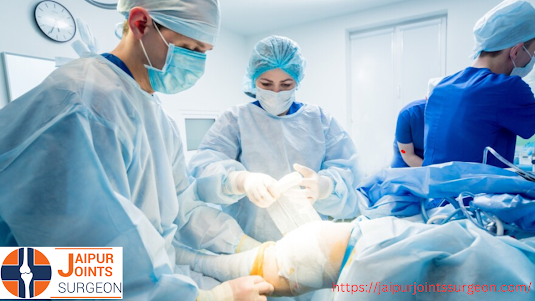Shoulder Arthroscopy - Procedure & Treatment
Shoulder arthroscopy is a minimally invasive surgical procedure used to diagnose and treat various conditions affecting the shoulder joint. This procedure involves the insertion of a small camera, called an arthroscope, through a small incision in the shoulder, allowing the Shoulder Arthroscopy Surgeon In Jaipur to visualize the inside of the joint and perform the necessary procedures.
Indications for Shoulder Arthroscopy:
Shoulder arthroscopy is commonly used to diagnose and
treat a variety of shoulder problems, including:
1. Rotator Cuff Tear: A tear in one or
more of the tendons that attach the muscles of the rotator cuff to the shoulder
bone.
2. Shoulder Impingement Syndrome: This occurs when the rotator cuff tendons become irritated and inflamed as they pass
through the shoulder joint.
3. Shoulder Instability: When the
shoulder joint becomes unstable, causing the shoulder to dislocate or slip out
of place.
4. Frozen Shoulder: Also known as
adhesive capsulitis, is a condition in which the shoulder becomes stiff and
painful, limiting movement.
5. Arthritis: Inflammation of the joint
that causes pain and stiffness.
Procedure:
Shoulder arthroscopy is typically performed on an
outpatient basis, and the patient is given general anesthesia. The procedure
usually takes about an hour to complete, and the patient can return home the
same day.
During the procedure, the surgeon makes two or three
small incisions around the shoulder joint. An arthroscope, which is a small
camera, is inserted through one of the incisions to view the inside of the
shoulder joint. The images from the camera are projected onto a monitor,
allowing the surgeon to see the joint in detail.
Surgical instruments are inserted through the other
incisions to perform the necessary procedures, such as repairing a torn rotator
cuff, removing bone spurs, or trimming damaged cartilage.
After the surgery, the incisions are closed with
stitches, and a sterile dressing is applied to the shoulder.
Recovery:
Recovery time after shoulder arthroscopy varies
depending on the severity of the condition and the extent of the procedure
performed. However, most patients can expect to resume their normal activities
within a few weeks.
Physical therapy is an important part of the recovery
process, as it helps to restore the range of motion and strength to the shoulder
joint. The physical therapist will work with the patient to develop an
individualized rehabilitation program based on their specific needs.
Potential Risks:
Like any surgical procedure, shoulder arthroscopy
carries some risks. Some of the potential risks include:
1. Infection
2. Bleeding
3. Nerve damage
4. Stiffness in the shoulder
5. Blood clots
Conclusion:
Shoulder arthroscopy is a safe and effective procedure
for diagnosing and treating various conditions affecting the shoulder joint.
With advances in technology, the procedure has become less invasive, resulting
in shorter recovery times and improved outcomes. If you are experiencing
shoulder pain or limited range of motion, speak to your Orthopedic Doctor in Jaipur about whether shoulder arthroscopy may
be right for you.
.jpg)



Comments
Post a Comment